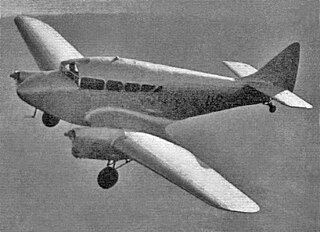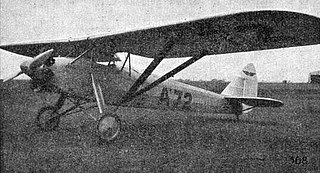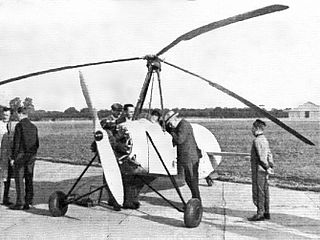| HS.9 and HS.16 | |
|---|---|
 | |
| HS.9 | |
| Role | two-seat touring monoplane |
| Manufacturer | Hopfner, Hirtenberg |
| Designer | Theodor Hopfner |
| First flight | 1932 |
| Number built | ca. 40 |
The Hirtenberg HS.9 was an Austrian two-seat touring or training aircraft of the early 1930s.
| HS.9 and HS.16 | |
|---|---|
 | |
| HS.9 | |
| Role | two-seat touring monoplane |
| Manufacturer | Hopfner, Hirtenberg |
| Designer | Theodor Hopfner |
| First flight | 1932 |
| Number built | ca. 40 |
The Hirtenberg HS.9 was an Austrian two-seat touring or training aircraft of the early 1930s.
A derivative of the Hopfner HS-5/28 via the Hopfner HS-8/29, the HS.9 was a parasol wing monoplane with a fixed tailskid landing gear and room for two occupants in tandem open cockpits, and first flew as the Hopfner HS-9/32 in 1932, powered by a de Havilland Gipsy I engine. Production versions had Siemens Sh 14 engines with NACA cowlings. A single example of a refined version with an uncowled Siemens engine was flown in 1935 as the Hopfner HS-9/35, shortly before the Hopfner company went bankrupt.
When Hopfner's assets were purchased by Otto Eberhardt Patronenfabrik, production continued of both de Havilland- and Siemens-powered aircraft under the Hirtenberg brand.
Data fromBritish Civil Aircraft since 1919 Volume 3. [1]
General characteristics
Performance

The de Havilland Gipsy Major or Gipsy IIIA is a four-cylinder, air-cooled, inverted inline engine used in a variety of light aircraft produced in the 1930s, including the famous Tiger Moth biplane. Many Gipsy Major engines still power vintage aircraft types.

The Saab 91 Safir is a three or four seater, single engine trainer aircraft. The Safir was built by Saab AB in Linköping, Sweden and by De Schelde in Dordrecht, Netherlands.
Otto Eberhardt Patronenfabrik was a munitions company established in 1860. The company's Hirtenberger Patronen, Zündhütchen und Metallwarenfabrik near Wiener Neustadt used forced labor during World War II from a sub-camp of the Mauthausen-Gusen concentration camp and produced ammunition including 9×19mm Parabellum and 8 mm Mauser (rifle) cartridges. The company also had a factory in Ronsdorf near Wuppertal which produced rifles. Additional Gustloff facilities were in Meiningen and Weimar.

The Auster J/5 Alpine was a 1950s British single-engined four-seat high-wing training and touring monoplane built by Auster Aircraft Limited at Rearsby, Leicestershire.

The Albatros L 82 was a 1920s German trainer biplane. Of conventional configuration, it seated the pilot and instructor in separate, open cockpits. The wings were single-bay, equal-span, and unstaggered.

The Chrislea Super Ace is a 1940s British four-seat light aircraft built by Chrislea Aircraft Limited.

The Avro Club Cadet was a 1930s single-engined British biplane trainer aircraft, designed and built by Avro as a development of the earlier Cadet. It was planned for private and club use and, unlike the Cadet, was fitted with folding wings.

The Miles M.2 Hawk was a twin-seat light monoplane designed and produced by the British aircraft manufacturer Miles Aircraft Limited during the 1930s. It is the first of the company's aircraft to attain quantity production.

The Miles M.3 Falcon is a 1930s British three/four-seat cabin monoplane aircraft designed by Miles Aircraft Limited.

The Miles M.4A Merlin was a 1930s British five-seat cabin monoplane built by Miles Aircraft Limited.

The Miles M.5 Sparrowhawk was a 1930s British single-seat racing and touring monoplane designed by Miles Aircraft Limited.
The Miles M.6 Hawcon was a 1930s British experimental monoplane designed by Miles Aircraft Limited. The Hawcon name comes from a combination of Hawk and Falcon.

The Miles M.7 Nighthawk was a 1930s British training and communications monoplane designed by Miles Aircraft Limited.

The Miles M.8 Peregrine was a 1930s British twin-engined light transport monoplane designed by Miles Aircraft Limited.

The Caudron C.280 Phalène ("Moth") was a civil utility aircraft built in France during the 1930s. It was a high-wing braced monoplane of conventional configuration with fixed tailskid undercarriage. The pilot and two-three passengers were accommodated within an enclosed cabin. The structure was wooden throughout, with the forward fuselage skinned with plywood, and the rest of the aircraft fabric-covered.

The Hopfner HS-8/29 was a utility aircraft built in Austria in the late 1920s based on the Hopfner HS-5/28. It used a modernised version of its predecessor's airframe, being a conventional, parasol-wing monoplane with seating for two occupants in tandem, open cockpits. The landing gear was of fixed, tailskid type with divided main units. The first prototype used the same Walter NZ 85 engine that the later HS-5/28s had used, but this was followed by 14 production examples with Siemens engines, and a single prototype with a de Havilland Gipsy III.

The Hopfner HA-11/33 was an amphibious flying boat built in Austria in 1933 to a specification by the Dr. Oetker company. The result was a conventional, high-wing cantilever monoplane with a stepped flying boat hull and pontoons on struts under the wings at mid-span. The cabin was fully enclosed, and the twin engines were mounted tractor-fashion on struts above the wing.

The Westland Widgeon was a British light aircraft of the 1920s. A single-engined parasol monoplane, the Widgeon was built in small numbers before Westland abandoned production in 1929.

The Hafner A.R.III Gyroplane was a British 1930s experimental autogyro designed by Austrian Raoul Hafner, and built by the A.R.III Construction Company at Denham, Buckinghamshire.

The Hirtenberg HV.15 was a twin-engine Austrian monoplane designed by Hirtenberg.